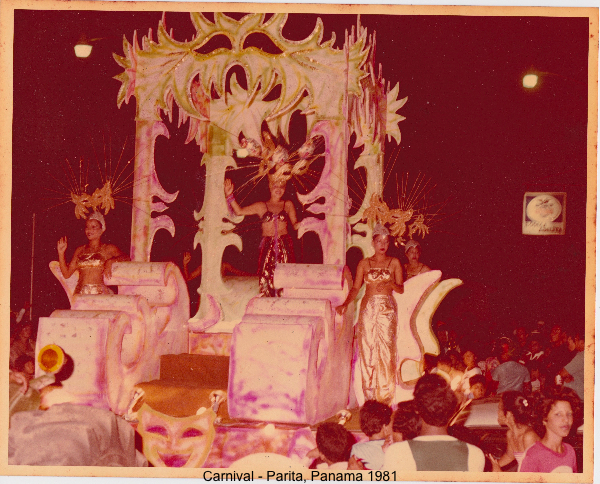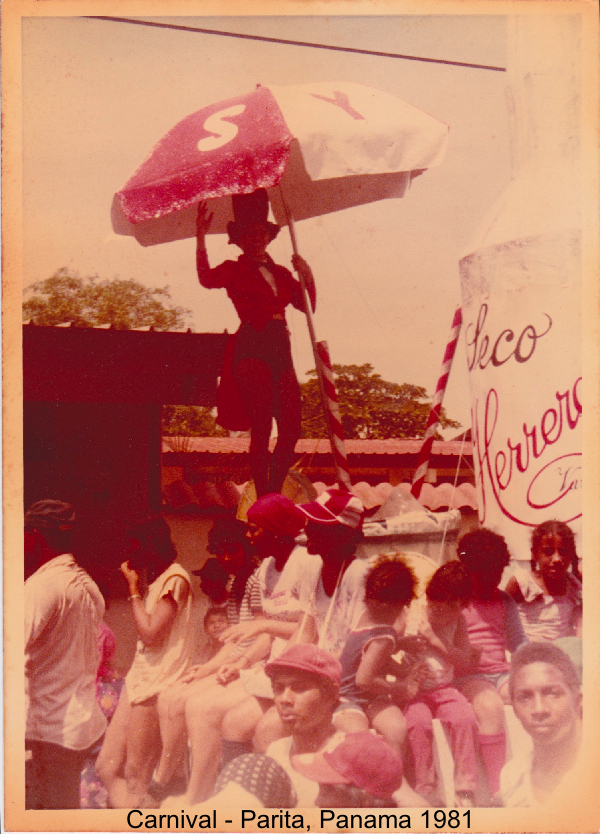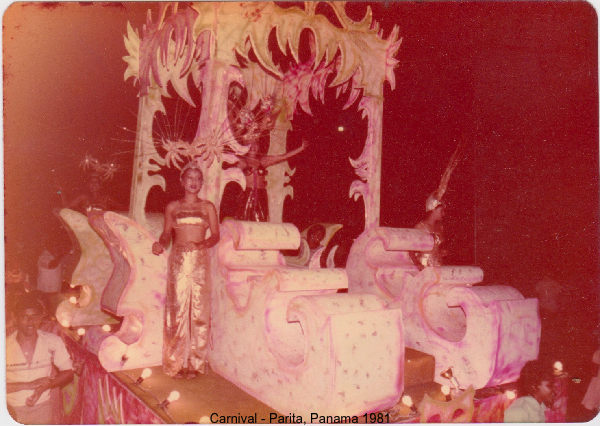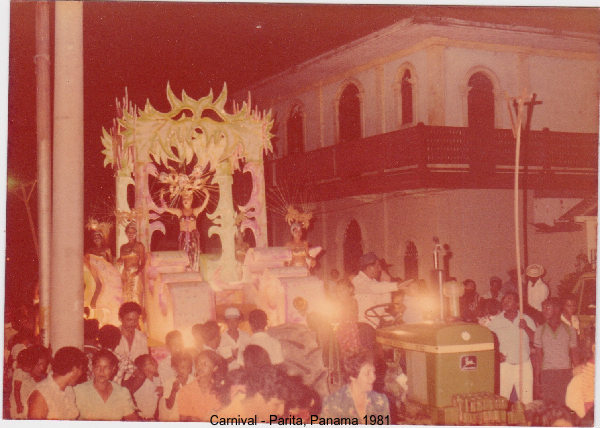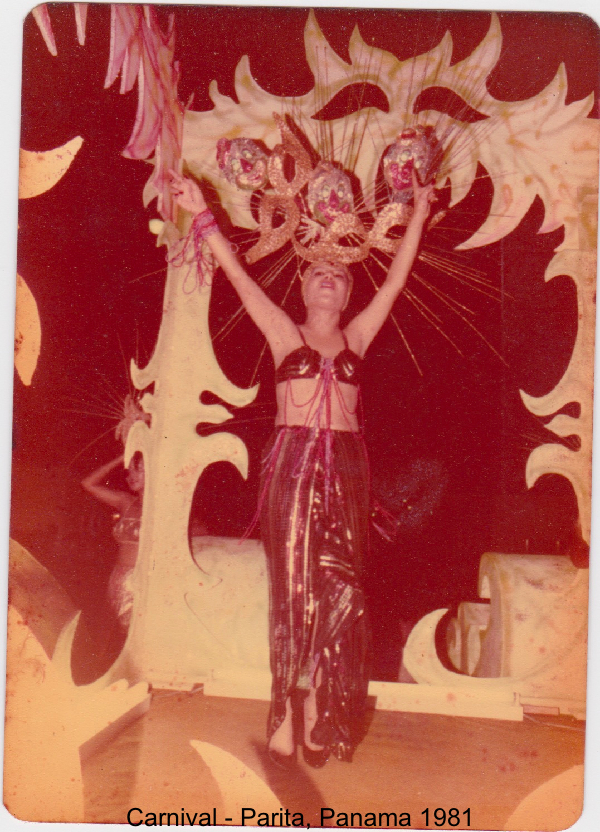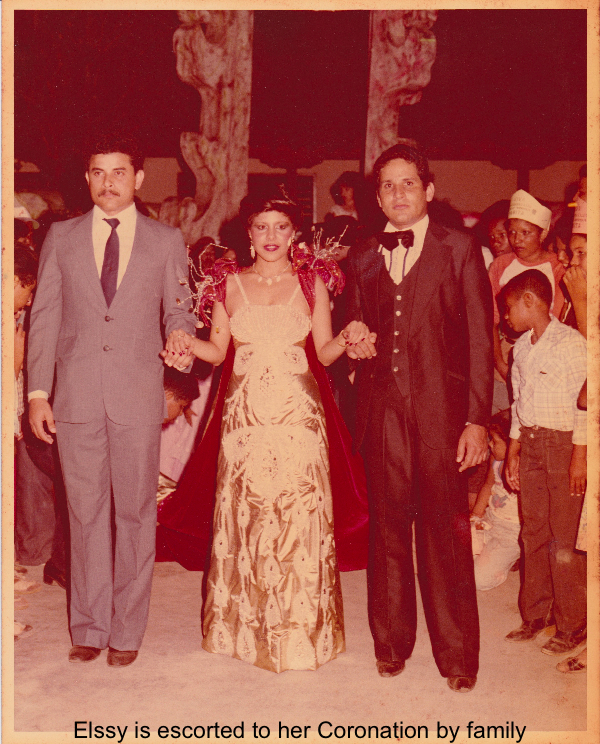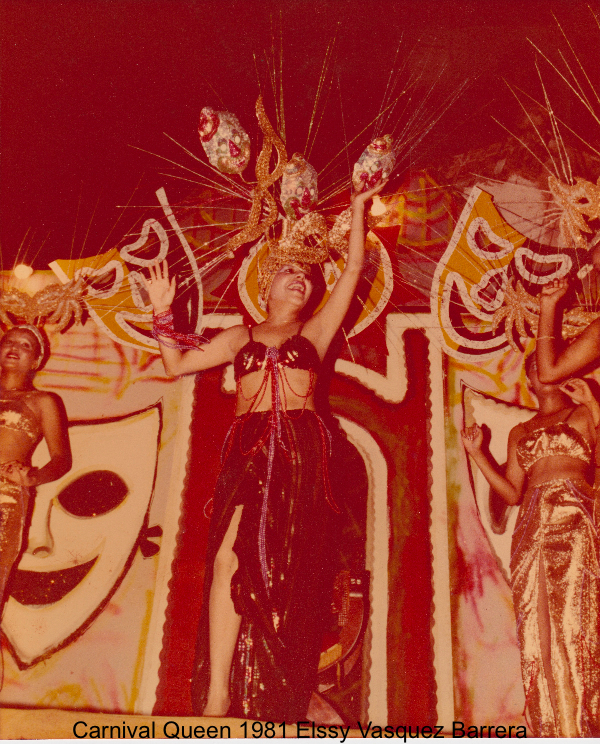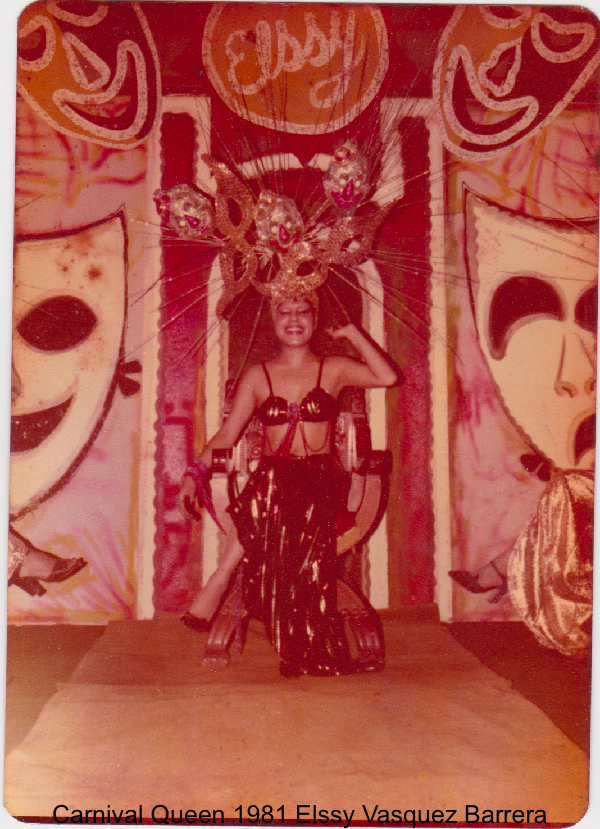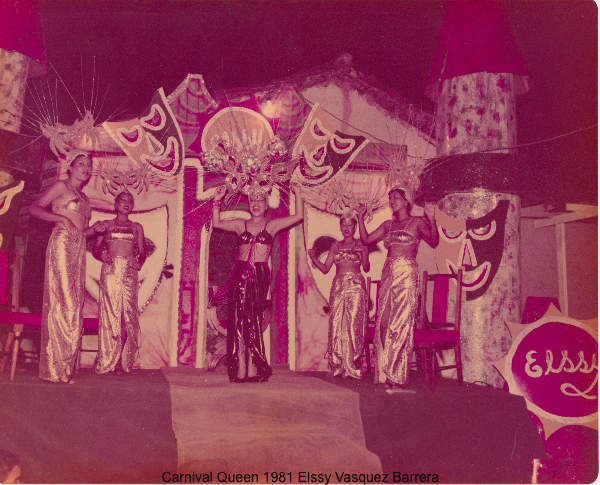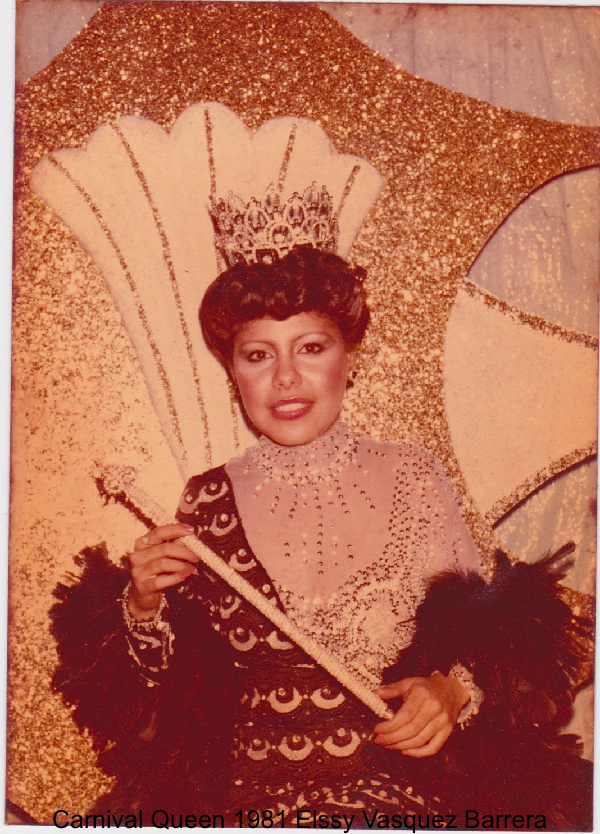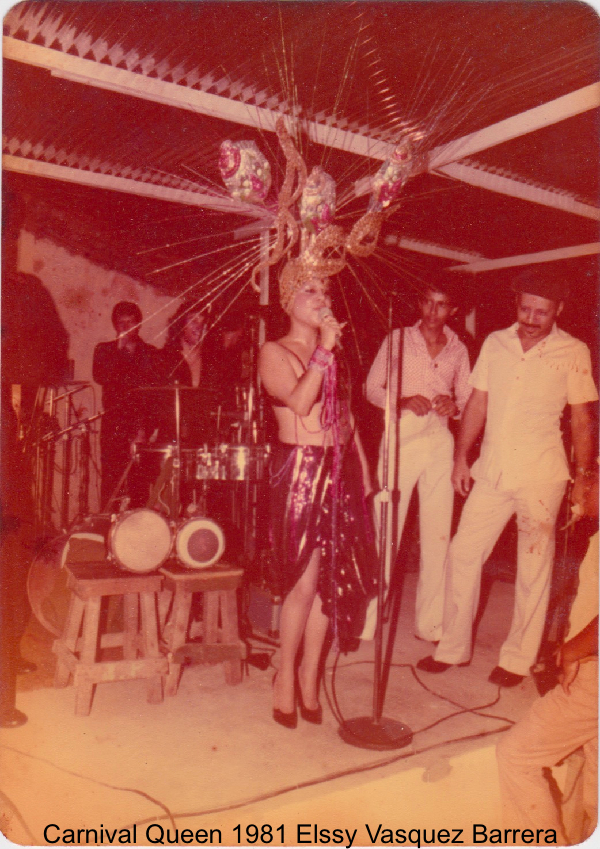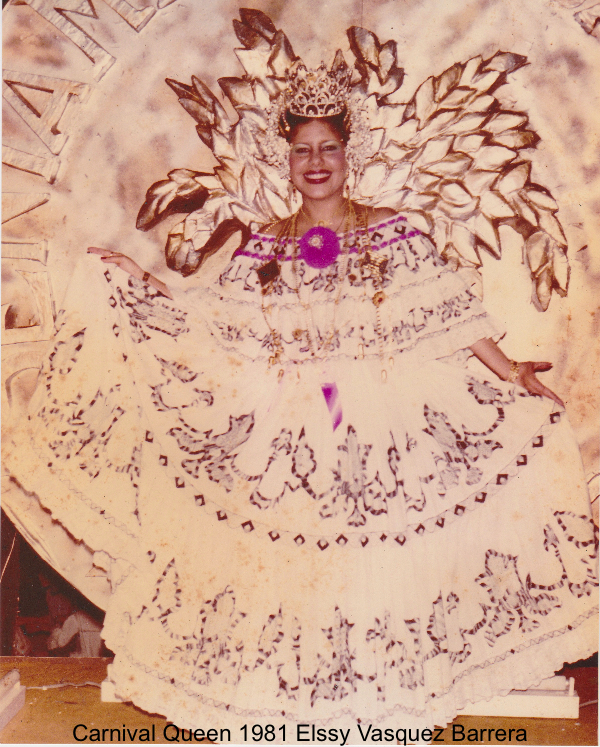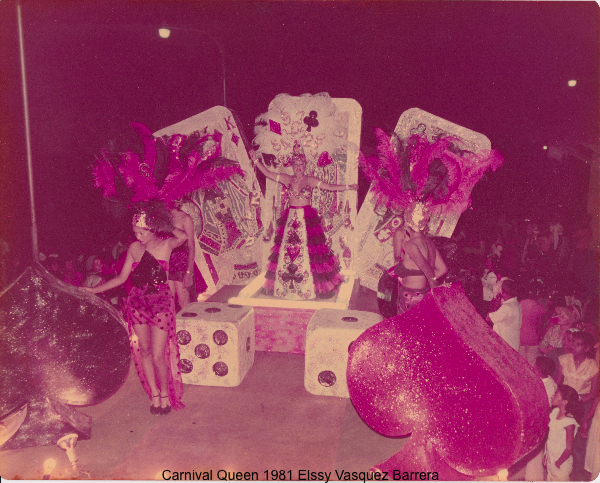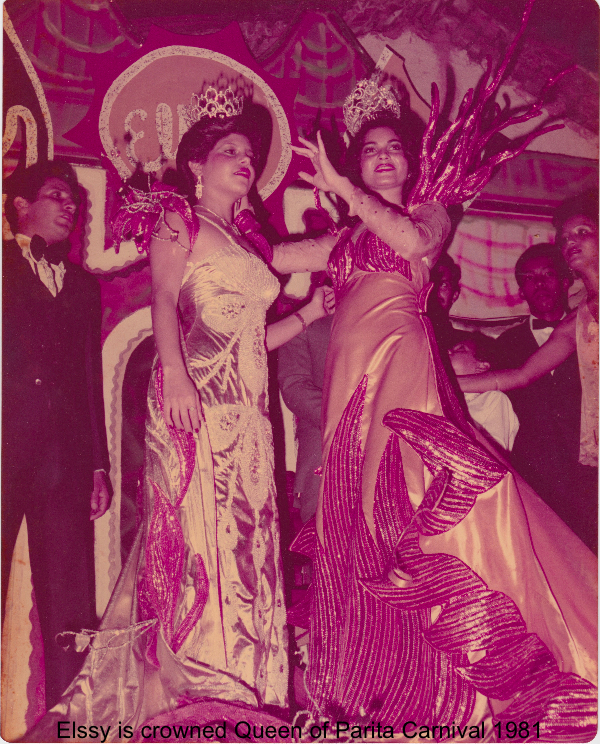Carnival Through the Eyes of a Queen
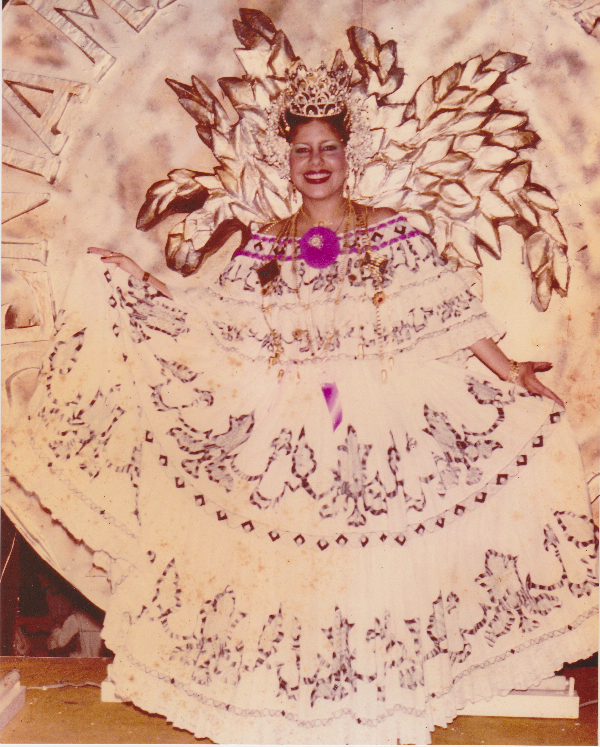
There is no other week in the year that represents Panamanians' enthusiasm for fun, family and partying like Carnival – a five-day non-stop festival that transforms the entire country. Considered one of the largest festivals in the world, "los Carnavales" begins on the Friday leading up to Lent. Parades, live music, fireworks and the occasional cerveza (okay, maybe not so occasional) highlight each and every day. Official carnivals take place in many towns and cities across the country, with the bigger and more popular ones in Las Tablas (many other places on the Azuero Peninsula), Panama City and Penenomé. Not to be outdone, smaller towns have a history of putting on carnivals with exquisite pageantry that rival the more famous. Parita, about 10kms from Chitré, is one such town. The biggest highlight of each carnival is the crowning of a queen to represent the town, or a part of the town. This is a tremendous honor for the women (and their families) chosen for this role. Playacommunity had the good fortune to speak with Elssy Vasquez Barrera, who was Carnival Queen in her home town of Parita in 1981. Her mother was a long-time organizer of the Parita Carnival and the family undertook a number of fundraising efforts throughout the year so they could provide Elssy with the money for the elaborate dresses needed over the course of the Carnival's five days.
"For me, being Queen was excellent and I still remember the great support I had from my family," explains Elssy. "I was very proud and very excited to be part of all the parades and festivities."
The Queen's coronation occurs on the Friday night, the first major event of the festivities. She then rides around on a special float along the parade route, usually along the main road of town, followed by her supporters and a band (the Queen's supporters or "her camp" are called Tuna). Every day for the rest of the Carnival, the Queen wears unique dresses and head gear, while riding around on new floats. She is the center of attention with extravagant outfits of every color of the rainbow, sequins glistening in the sunshine, feathers waving in the breeze and fabrics draped like magic. A Queen could have more than 10 dresses – and to say they are elaborate would be an understatement!
"The dresses are fantastic," explains Elssy. "People spend many weeks and months making these outfits for the Queen."
Elssy says the dresses today are similar in design and colors, but they have become even more extensive. She adds that the Carnival is similar to the dresses, in that it's basically the same as 30 years ago – only bigger. One of the differences, she explains, is that today the parades start later in the day, which means they end later into the night. There's also been an influx of tourists anxious to see the Panamanian traditions.
"I try to go every year with my kids to celebrate because I think it's a cultural affair with lots of traditions," she says.
As Queen, Elssy's role didn't stop when Carnival ended. She was expected to help with fundraising efforts for the following year and ride on a coronation float the next Carnival - she would be part of the coronation ceremony of her predecessor.
Her advice for women wanting to be Carnival Queen? Be very prepared and organized, and have great support, she says.
 Elssy fondly remembers the 1981 Carnival beyond being Queen. She says the town brought in special fireworks from Costa Rica and her mother was very excited because she loved fireworks. Also, the town was able to bring in the Toby Munoz Orchestra, which was very popular in Panama at the time.
Elssy fondly remembers the 1981 Carnival beyond being Queen. She says the town brought in special fireworks from Costa Rica and her mother was very excited because she loved fireworks. Also, the town was able to bring in the Toby Munoz Orchestra, which was very popular in Panama at the time.
"There was much excitement in the town that year," Elssy says. "It was a bigger Carnival than we had in previous years."
Fireworks and music are two reasons to go to Carnival. The pageantry of the parade floats and the beautiful dresses worn by the Queen, is another reason. There are usually rivalries between different parts of the city/town that involve competitions for best costumes, floats and music – those rivalries have brewed for generations. Of course, there is endless dancing and drinking. And, if you need to get cool there is the Carnival tradition of getting sprayed down by cold water, usually from a fire hose.
As for Parita, Elssy believes it's a great place for people to go visit and experience Carnival. Not as big as nearby Las Tablas but just as exciting and entertaining. The town has a colonial heritage with a beautiful open plaza next to a church – the perfect area to play host to Carnival and watch the nightly fireworks. Tuesday night is the night for fireworks because that's when the official competition happens.
A big bang to end the celebrations.

